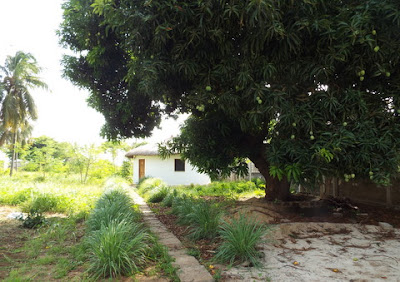If you visit me any morning, you are bound to see my eyes wander around and, sometimes, just ask you to hold what you were about to say for a second or a minute to give me time to grab my camera. There are so many interesting birds around, I literally don't know where to look.
This morning, while chatting with a relative, I glimpsed a sunbird I was not sure I could identify more specifically. I've discovered over time that there are several types gracing the flowers in my garden. I quickly grabbed my camera and took a couple of pictures.
Then it was a matter of figuring out which member of the large sunbird family it is. I am still not sure, but I'm tentatively identifying it as a female Beautiful sunbird / Cinnyris pulchellus / Souïmanga à longue queue.
A friendly reminder: although I'm tickled pink when you appreciate my posts, I do much less enjoy seeing people reusing my copyrighted material without contacting me first. Please ask for permission. It's nice, and it's the law. Thank you!























